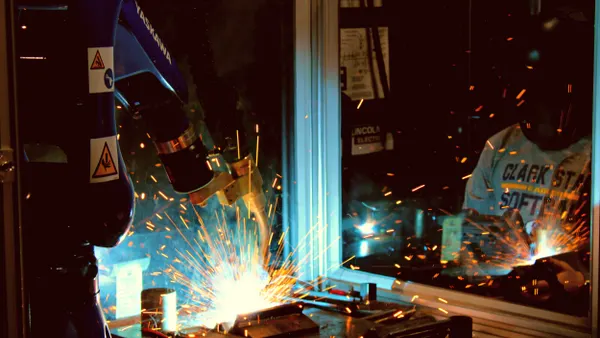The skills gap is pernicious enough that some employers have decided to go back to school — literally.
A lack of tech skills in the applicant population has prompted employers to team up with partners to upskill employees and hire people who have an interest in learning, rather than expertise. But some, like IBM, are aiming at the source — high schools — to build baseline knowledge that could ease some of the long-term pains of upskilling.
“What I found when I was a teacher and working with students is that too often, that content is really geared toward people who have a fundamental baseline in whatever that industry course is in,” Cliff Archey, IBM education manager, told HR Dive in an interview. “They already speak the language, they already know the core tenants.”
In 2011, IBM founded Pathways for Technology Early College High School, or P-TECH, a brick-and-mortar school in Brooklyn for local students. In March 2020, it created Open P-TECH — an online resource that, while aimed at those age 14 to 20, is “freely available to everyone,” Archey said.
Despite its intended audience, the format of Open P-TECH may serve as an example of how employers will need to amplify their upskilling goals to meet the demands of the future.
The high school-to-workplace gap
The brick-and-mortar P-TECH program was intended to “break down the silos that have historically existed between higher ed and industry,” Archey said. The P-TECH model is more involved from the industry side, he added, with a focus on internships and mentoring with IBM and fellow industry partners. As early as 9th grade, students in the program can start taking degree-grade course work.
“We’re taking a model we know works and doing more early college and more industry involvement … really requiring more on the part of each partner,” Archey said.
Brick-and-mortar P-TECH attracted attention because it was, essentially, IBM opening up a high school and tuning the model slightly. IBM intends to do the same with Open P-TECH for online learning, bringing improved base level knowledge to people of all ages.
“What I think makes this unique is there’s a lot of online learning solutions out there,” Archey said, including certifications and other industry-level courses. “I haven’t found the content I can use to make something like AI relevant to all the students sitting in front of us. They aren’t all software engineers. But we all know they’re going to need to have an understanding of those things.”
L&D leaders may be familiar with the platform’s model for their own companies’ basic training programs, as Open P-TECH intentionally mirrors how organizations prepare employees for work, Archey said. But employers may also be able to take what Open P-TECH is doing for base technical knowledge and bring it back around to workers —potentially identifying the missing piece in the upskilling puzzle.
As for why base technical knowledge is lacking in most upskilling programs, Archey noted that employers are typically focused on the people “in front of them” — applicants and employees — who likely have above a high school diploma and have gone through “traditional, cookie cutter schooling.” Those applicants and workers likely have the core skills for their current job, but may not have the base skills to pick up the requisite knowledge for future positions.
To help solve this, learners using Open P-TECH can take a badge course similar to what an IBM employee would take, Archey said, such as about creating a chatbot. But the platform can also help a learner find prerequisite content to help them understand the building blocks behind chatbot creation.
Doing so may be key to solving the skills gap in the first place, Archey said. It may also mean employers will have to look earlier in the pipeline to build these skills; “It means you have to be proactive about how you target that. Investing in high school. Getting them interested in the careers [IBM] may not be interested in but help the industry grow and get people into those jobs.”
It’s not a silver bullet, Archey noted — “there are no silver bullets” — but skills-based education that is open to a wider audience “will help with a lot of things we’ve cared about for a long time.” In the long term, IBM intends to allow content from other companies and industries on the platform to ensure students are interested in the skills of the future, Archey added. That way, employers are “better able to meet their talent pipeline still in classrooms” -- and improve their learning programs across the board.





















